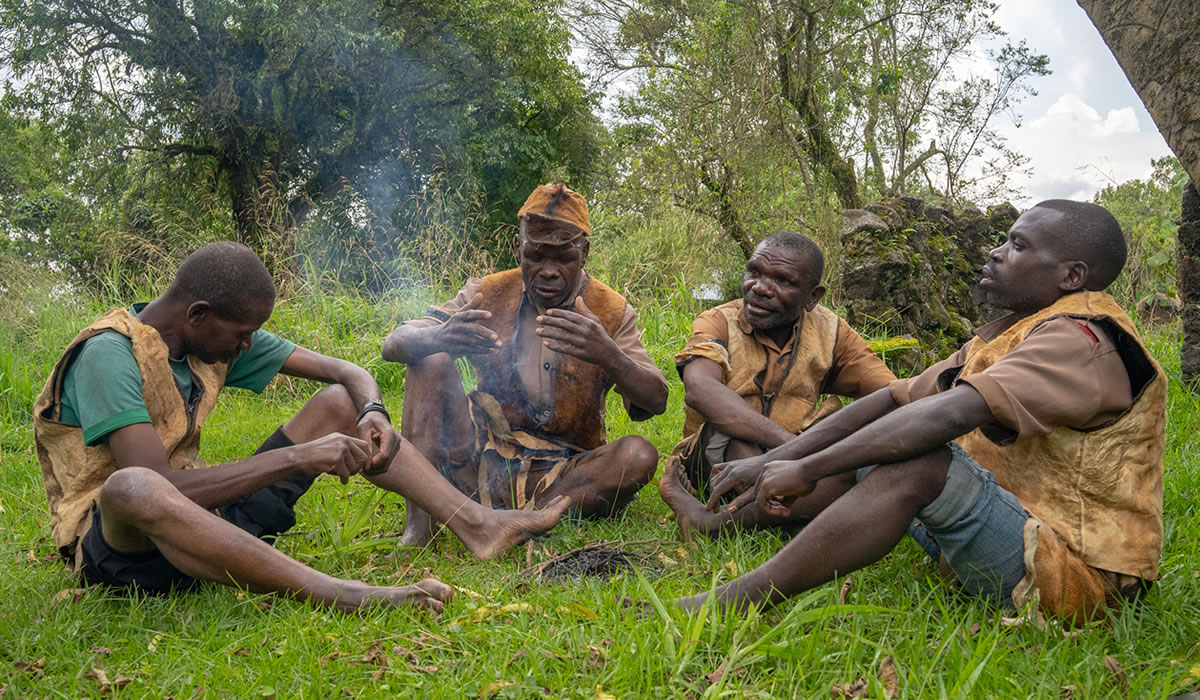Uganda is not only a land of incredible wildlife and breathtaking landscapes but also a country with rich cultural heritage and deep-rooted traditions. With over 50 distinct ethnic groups, each with its own customs, music, dances, crafts, and language, Uganda is a vibrant mosaic of cultures waiting to be explored. Cultural expeditions in Uganda give tourists the opportunity to immerse themselves in authentic African traditions, engage with local communities, and experience the true spirit of Ugandan hospitality. From visiting ancient kingdoms and rural villages to attending colorful festivals and learning traditional crafts, cultural tourism in Uganda offers a rewarding and enlightening experience that complements its world-famous wildlife safaris.

The Rich Cultural Diversity of Uganda
Uganda’s cultural diversity is one of its greatest treasures. The country’s people are broadly divided into four main linguistic and cultural groups: the Bantu, Nilotic, Central Sudanic, and Nilo-Hamitic communities. Each group has its own unique way of life shaped by history, geography, and tradition. The Bantu, found mostly in the central, western, and southern regions, include the Baganda, Banyoro, Bakiga, and Basoga. The Nilotic people, such as the Acholi, Langi, and Alur, inhabit the northern parts, while the Iteso, Karamojong, and other Nilo-Hamitic groups live in the east and northeast.
Despite these differences, Ugandans share a strong sense of unity and hospitality. Cultural expeditions across the country allow tourists to experience this diversity firsthand, offering insights into traditional governance, beliefs, cuisines, and community life. Many of these experiences are intertwined with Uganda’s natural beauty, creating memorable encounters that combine culture and adventure.
The Buganda Kingdom and the Heart of Ugandan Culture
The Buganda Kingdom is Uganda’s largest and most influential cultural institution, and its heritage is deeply woven into the nation’s identity. Located in the central region, Buganda is home to the Baganda people, whose capital, Kampala, also serves as Uganda’s national capital. A cultural expedition in Buganda offers tourists an opportunity to learn about the history, traditions, and political structure of one of Africa’s oldest kingdoms.
A visit to the Kasubi Tombs, a UNESCO World Heritage Site, is a highlight of any cultural tour in Kampala. The tombs serve as the burial grounds for Buganda’s kings (Kabakas) and represent an architectural masterpiece made entirely from organic materials. Tourists can also visit the Lubiri Palace (Mengo Palace), which houses historical artifacts and offers insight into Buganda’s monarchical system. The Buganda Royal Mile, connecting the palace to the Bulange Parliament, is another fascinating cultural route that showcases statues, symbols, and stories significant to the kingdom’s heritage.
Buganda’s culture is also expressed through vibrant music and dance. The traditional Bakisimba dance, performed during celebrations, is a rhythmic display of energy and grace that reflects joy and unity. Tourists can witness these performances during cultural shows or at community events throughout Kampala and central Uganda.
The Bunyoro and Toro Kingdoms – Guardians of Western Uganda’s Heritage
Western Uganda is home to two historic kingdoms, Bunyoro and Toro, both known for their deep-rooted traditions and royal institutions. The Bunyoro Kingdom, once one of the most powerful empires in East Africa, is centered in Hoima. Cultural expeditions here provide a glimpse into ancient leadership systems and clan structures. The Karuziika Royal Palace is an important cultural site where tourists can learn about the kingdom’s history, traditional regalia, and the role of the Omukama (king).
Further south lies the Toro Kingdom, with its capital in Fort Portal. The Toro people are known for their hospitality and rich cultural expressions. The Tooro Royal Palace, perched on a hill overlooking the city, offers panoramic views and a deep sense of history. Tourists visiting Fort Portal can also attend cultural festivals or visit traditional homesteads to experience daily life, music, and cuisine. The region’s cool climate and scenic landscapes make it ideal for cultural and nature-based tourism.
The Karamojong – Nomadic Traditions of the Northeast
In northeastern Uganda, the Karamojong people maintain one of the most authentic and traditional lifestyles in the country. Their semi-nomadic culture revolves around cattle, which hold both economic and social importance. Cultural expeditions in Karamoja allow tourists to experience a way of life that has remained largely unchanged for generations.
Visitors can tour traditional manyattas (homesteads), which are built using sticks, mud, and grass. They can interact with community elders, learn about the Karamojong’s intricate cattle-keeping systems, and witness their striking dress and beadwork. The Karamojong are known for their vibrant dances and storytelling traditions, often performed around bonfires in the evening. These performances provide a deep understanding of their history, beliefs, and resilience.
Tourists visiting Karamoja can combine cultural encounters with nature-based experiences in nearby Kidepo Valley National Park. The region’s combination of stunning landscapes and authentic culture makes it one of Uganda’s most captivating destinations for cultural tourism.
The Batwa – Keepers of the Forest Heritage
The Batwa, also known as the Pygmies, are one of Uganda’s oldest indigenous groups and were the original inhabitants of the country’s southwestern forests, including Bwindi and Mgahinga. Traditionally hunter-gatherers, the Batwa lived in harmony with the forest, relying on it for food, medicine, and shelter. After the creation of national parks, they were relocated but continue to preserve their cultural heritage through storytelling, dance, and traditional skills.
Tourists can experience Batwa culture through guided community tours around Bwindi Impenetrable National Park and Mgahinga Gorilla National Park. The Batwa Cultural Trail, led by local guides, takes visitors through their former forest home, demonstrating hunting techniques, fire-making, and the use of medicinal plants. The experience provides a rare and moving glimpse into the relationship between people and nature.
Proceeds from these tours often support community development projects and conservation initiatives, making the Batwa experience not only educational but also impactful in promoting sustainable tourism.
The Acholi and Langi – Northern Uganda’s Cultural Pride
Northern Uganda is home to the Acholi and Langi people, known for their resilience, artistry, and strong sense of community. The region has emerged as a major cultural tourism destination following years of reconstruction and peace. Cultural expeditions here introduce tourists to traditional music, dance, and crafts that have deep cultural meanings.
The Bwola dance of the Acholi, performed in circular formations with drums and chants, is one of Uganda’s most captivating traditional performances. Tourists visiting Gulu and Kitgum can attend cultural shows, visit homesteads, and participate in storytelling sessions that highlight local wisdom and folklore. The Acholi are also skilled in crafting baskets, spears, and musical instruments that serve both cultural and functional purposes.
Community-based tourism projects have flourished in northern Uganda, providing authentic experiences where tourists can engage directly with local people while contributing to social and economic development.
Cultural Festivals and Events
Uganda’s cultural festivals are colorful celebrations that bring together people from different backgrounds to honor their heritage. These festivals provide an excellent opportunity for tourists to experience music, dance, food, and art in one place.
The Imbalu Circumcision Ceremony of the Bagisu people in eastern Uganda is one of the most famous traditional events, symbolizing the transition of boys into manhood. Held every even year, it attracts thousands of participants and spectators. The Ekyooto Ha Mpango Festival in Fort Portal showcases Toro culture through food, crafts, and performances, while the Roast and Rhyme event in Kampala combines modern music with traditional influences.
In addition, the annual Bayimba International Festival of the Arts in Kampala and the Nyege Nyege Festival in Jinja celebrate Uganda’s creative spirit, blending traditional rhythms with contemporary art and music. These events not only entertain but also preserve and promote Uganda’s diverse cultural identity.
Craft Villages and Cultural Centers
For tourists interested in art and craftsmanship, Uganda has numerous craft markets and cultural centers where they can learn about traditional techniques and purchase handmade souvenirs. The National Cultural Centre (commonly known as the National Theatre) in Kampala hosts performances, exhibitions, and workshops that highlight Uganda’s artistic talent. The Ndere Cultural Centre is another popular venue where tourists can enjoy traditional dance performances and learn about the country’s ethnic diversity in an entertaining and educational setting.
Craft villages in Kampala, Entebbe, and Jinja showcase local artisans who create beautiful items such as woven baskets, wood carvings, beads, and textiles. Buying from these markets supports local artists and preserves traditional craftsmanship.
Combining Culture with Nature and Adventure
One of the best aspects of cultural expeditions in Uganda is that they can easily be combined with other safari activities. Tourists can experience the vibrant traditions of the Toro Kingdom before trekking chimpanzees in Kibale Forest, or engage with the Batwa communities after gorilla trekking in Bwindi. Visiting the Karamojong can be paired with wildlife game drives in Kidepo Valley, while exploring Buganda’s culture fits perfectly into a Kampala city tour.
This blend of culture and adventure makes Uganda a well-rounded destination where tourists can enjoy both wildlife and human heritage in one journey.
Cultural expeditions in Uganda offer tourists an authentic window into the soul of Africa. Beyond its wildlife and scenery, the country’s true beauty lies in its people, traditions, and stories that have been passed down for generations. From royal palaces and traditional dances to rural homesteads and forest communities, every encounter reveals a different facet of Uganda’s cultural richness. These experiences not only promote understanding and appreciation among tourists but also contribute to the preservation of Uganda’s cultural heritage and the empowerment of local communities. For those seeking meaningful travel experiences, cultural expeditions in Uganda promise connection, discovery, and unforgettable memories that go far beyond the ordinary safari.

